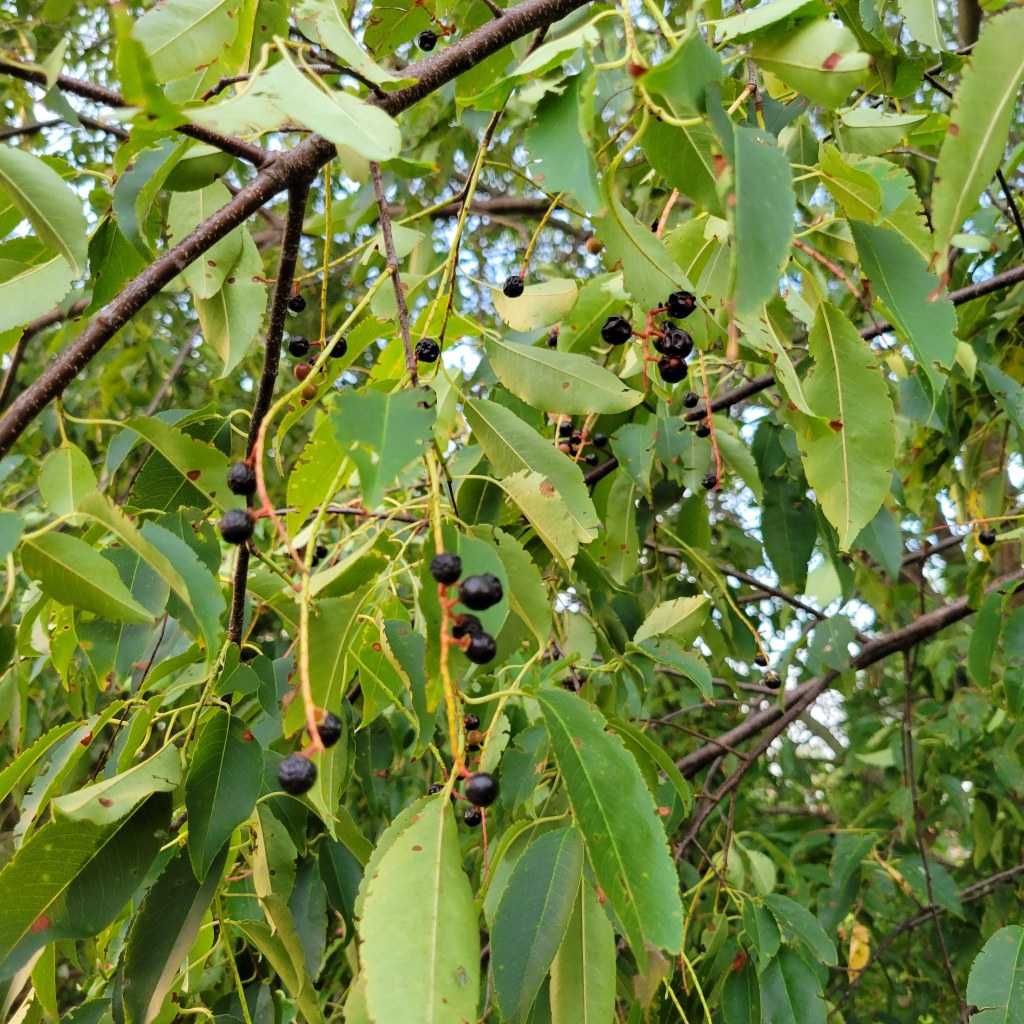Knowledge is…
…being aware that there is a black cherry tree (Prunus serotina) with ripe fruit in your yard.

Wisdom is…
…remembering that last year, harvesting and using the black cherries was more trouble that it was worth!
First and foremost, there seems to be no good way to avoid making a huge mess while processing the black cherries to use them in the first place. Because the kernels contain cyanogenic glycosides, care must be taken to avoid crushing or damaging them in such a way that the toxin might contaminate the actual cherry flesh or juice.
After all that work, I made black cherry rum and black cherry-elderberry wine, which—if you were wondering—I have barely touched in the intervening months. Sure, the wine had to age. But it should have been perfectly drinkable any time after February this year. Is it drinkable at all? No idea. I haven’t even tried it, eleven months after harvesting those cherries.
As for the black cherry rum. Well. I’m the only one who will drink it, given its strong resemblance to cherry cough syrup from the late 60s. (In fact, wild cherry bark is a traditional herbal medicine to treat coughs, so maybe that’s how cherry flavor became associated with cough syrup in the first place.)
At any rate, I drink rum very rarely since it doesn’t particularly like me. Plus, not many cocktail recipes call for black cherry rum versus dark rum or white rum. (Viljoen’s book offers two drinks, but both call for other ingredients I don’t have.) The black cherry rum does make a tasty mojito, although if you try it, cut back on the sugar because the black cherry rum brings its own sweetness to the drink.
Then there was the mahlab. Or rather, the container of black cherry pits that lingered in the back of my fridge for months because I never actually made mahlab. I dreaded the prospect of crushing all those tiny orbs to remove the shells and reveal the insides to roast, then powder, then use for seasoning. I recently found different instructions—after I composted the pits, alas—in Alan Bergo’s The Forager’s Chef, which call for roasting the pits whole then extracting the innards afterwards. It certainly sounds easier. But to what end? To add almond flavor to all those cookies and pastries and desserts I don’t eat anyway? If I do make cookies, pastries and desserts, I primarily use almond flour (though it’s a lamentably unsustainable ingredient) so have no need or desire for more almond flavor.
What’s a forager to do?
Leave the black cherries for the birds, of course! And focus on other wild foods better suited to my dietary habits.
[…] the local black cherries trees still flaunt fruit. I briefly reconsidered my earlier decision to skip the black cherries this year. Luckily for everything else on my to-do list, I thought better of it! Although I have enjoyed a […]